On 8 August, PSO joined a fascinating Mountain Training CPD day in the Wicklow Mountains, led by Dr Anthea Lacchia (science communicator and nature guide) and Helen Lawless (Access & Environment Manager, Mountaineering Ireland). This was more than just a hike. It was a full day of discovery—of plants, geology, and how we can tread more lightly on our uplands.
We set off from the Wicklow Gap car park on a blustery, overcast morning, heading uphill towards Tonelagee. Along the way, we paused often to look closely at the plants beneath our feet. With magnifying lenses and ID guides, we identified:
- Three common types of heather:
- Ling (small purple flowers)
- Bell (bell-shaped blooms)
- Cross-leaved Heath (crossed leaf pattern)
- Sundew: A small, sticky carnivorous plant that traps insects
- The three main families of lichens: Categorized by their growth form, are crustose, foliose, and fruticose. Crustose lichens form a crust-like layer on their substrate, foliose lichens are flat and leafy, while fruticose lichens have a shrubby, three-dimensional structure.
- Bilberries and Crowberries: Which we carefully sampled of course!
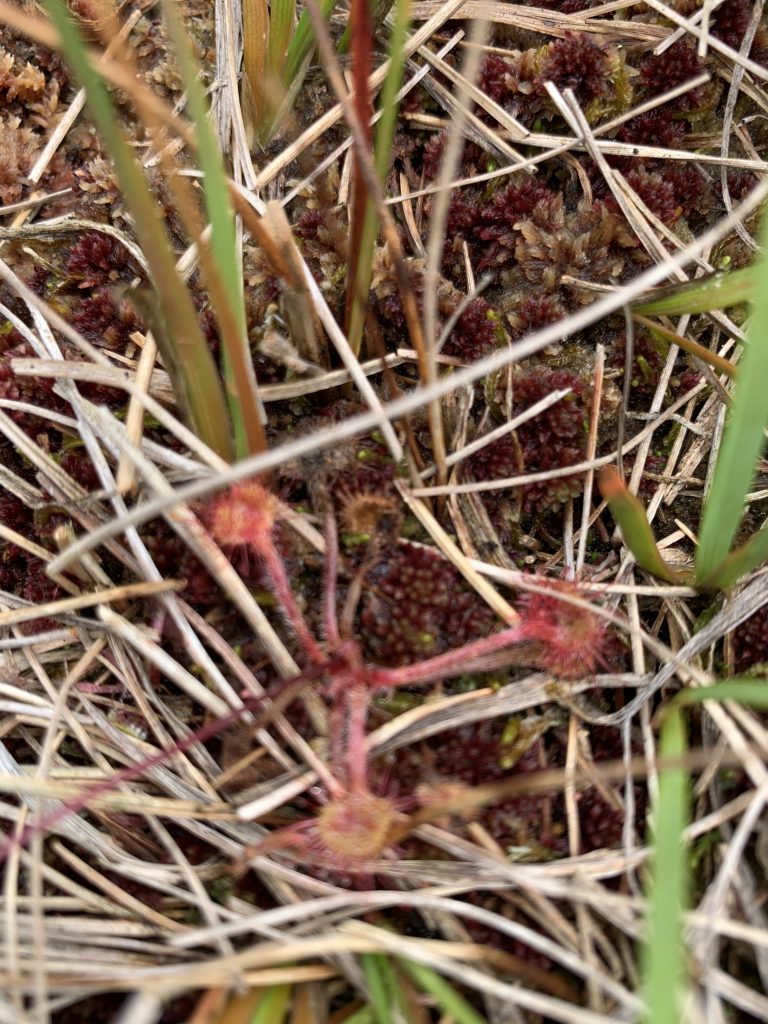
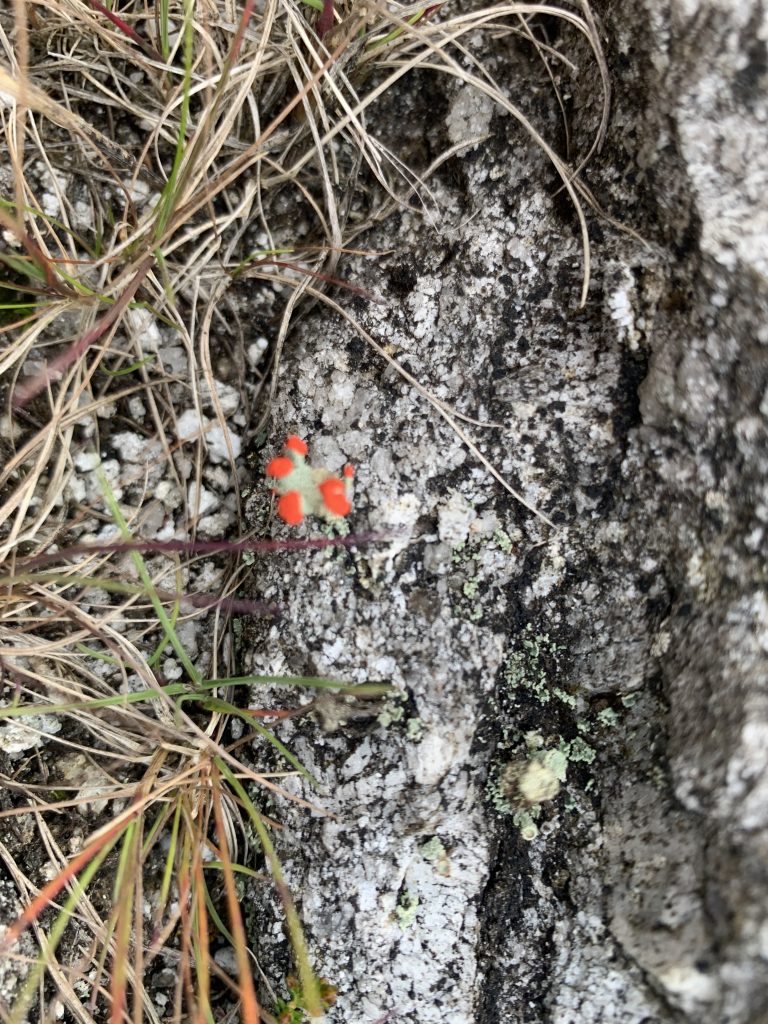
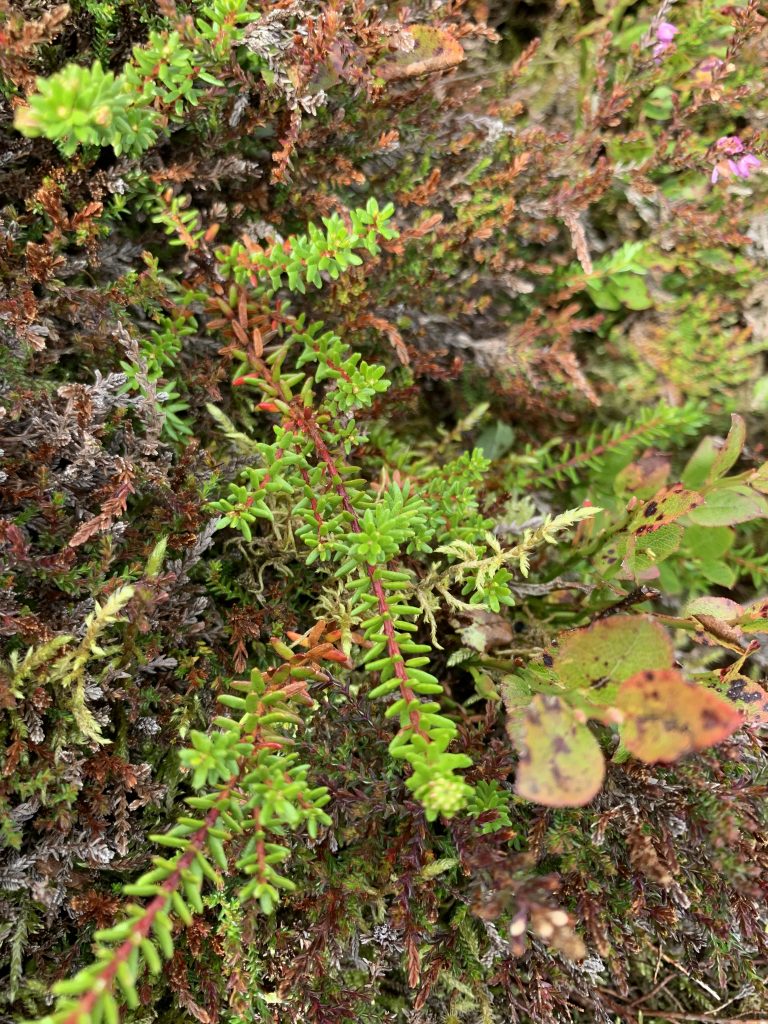
As we approached the summit, we were lucky to spot a majestic red kite hunting on the slopes below—an unforgettable moment.
Above Lough Ouler, the iconic heart-shaped lough, we discussed some of Ireland’s rarest alpine plant life—survivors from the last Ice Age, such as Fir Club Moss and Alpine Club Moss. These are ancient relatives of the giant plants that filled Earth 320 million years ago! This mountain, even at the summit, as with the Wicklow Mountain range in general is heavily grazed which is damaging habitats. The explosion in the deer population is a particular issue that needs to be addressed and it was good to hear there are plans in place.
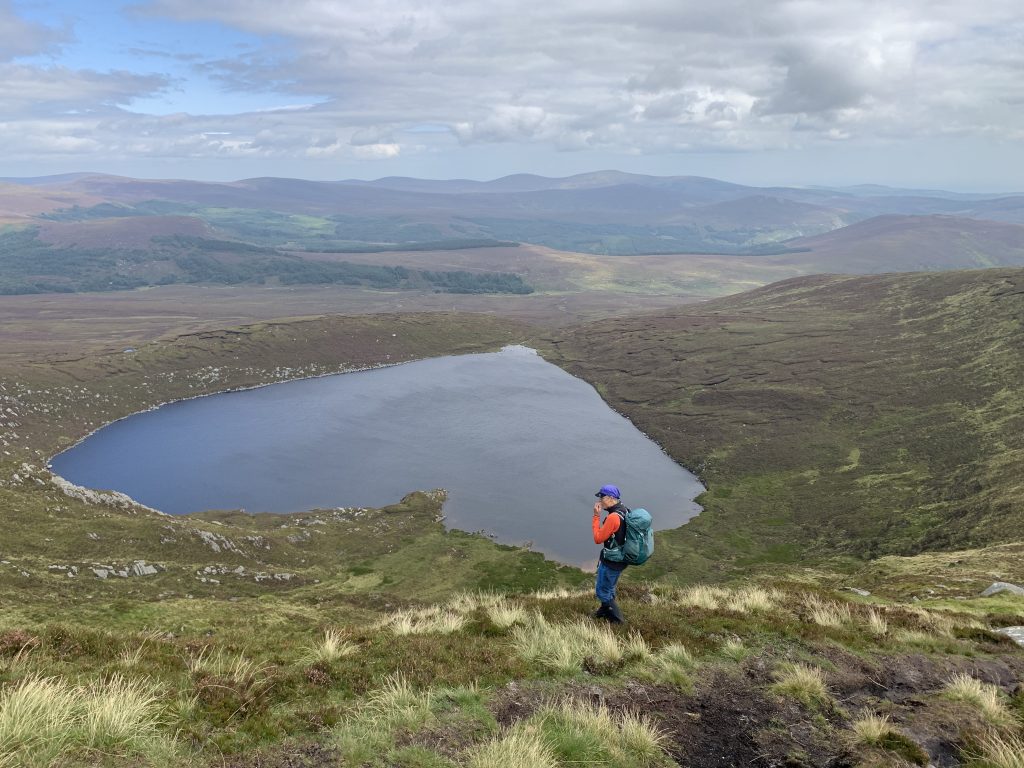
After lunch and discussions around protecting the environment, we descended towards Barnacullian, a key peatland restoration site. Some facts we learned:
- Peatlands cover just 3–5% of Earth’s land but store around 33% of all global soil carbon.
- Volunteer efforts here include installing small dams to restore water levels.
- Vegetation recovery is possible, evidenced by the differences in areas that have been fenced off from grazing animals only a few years ago.
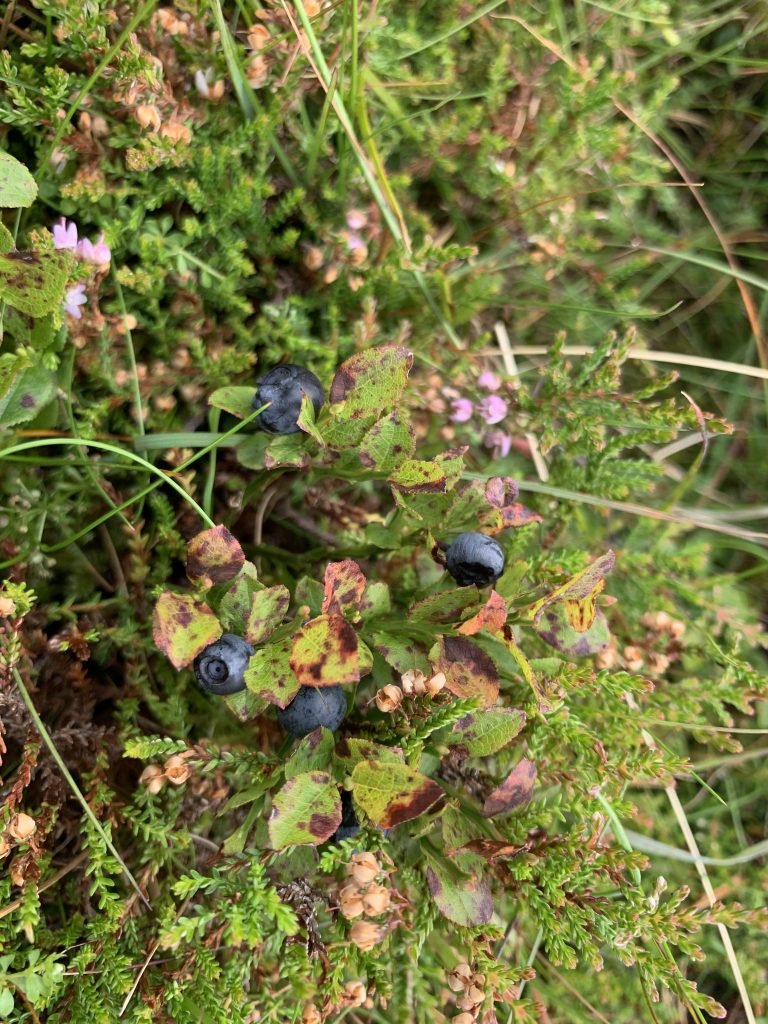
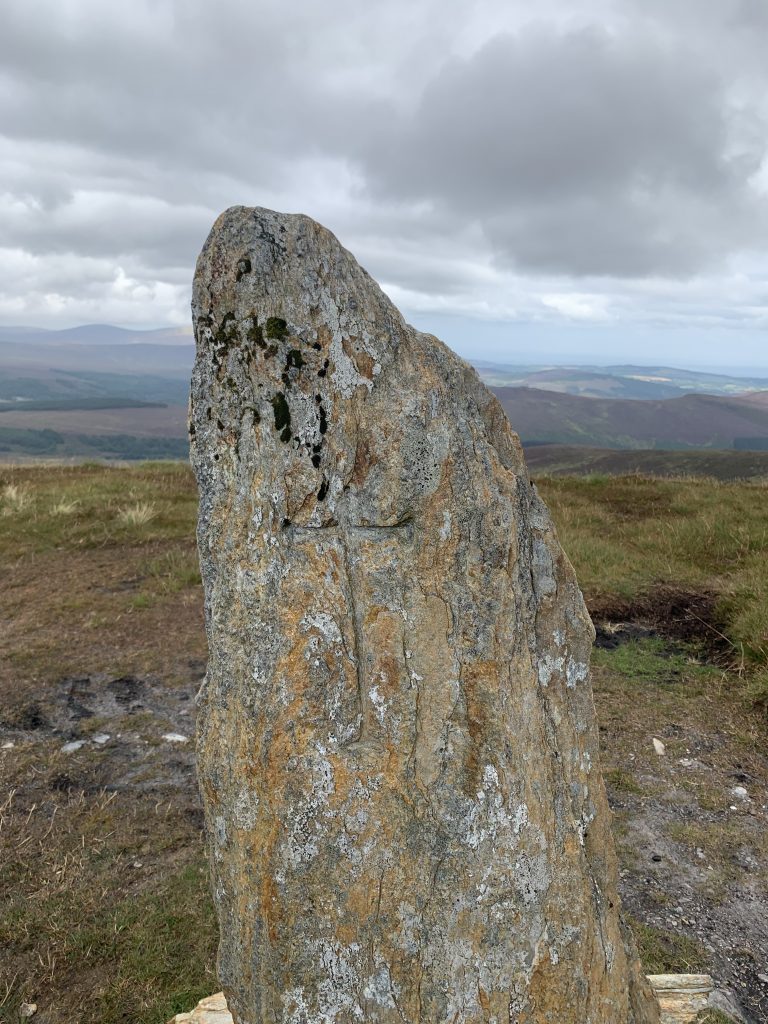
We also delved into the geology of the region, understanding how granite and quartzite shaped this part of Wicklow—remnants of ancient tectonic movements and volcanic activity.
As the sun came out, we made our way across a wide expanse of heather to the forest trail back to the cars. But the learning didn’t stop there. We reflected on Leave No Trace principles (learn more):
- Erosion: Trampling on bogland and off-path walking causes lasting damage—stick to paths where possible.
- Rubbish: Even organic waste like banana peels can take years to rot; plastics, tins, and glass don’t rot at all.
- Wildlife: Litter harms animals, so we collected any rubbish we found to take out with us.
- Dogs: Dogs are an increasingly problem as they disturb wildlife so keep dogs on a lead or better still don’t take them on the mountains.
This wasn’t just a walk—it was a reminder of our role as stewards of the uplands. While the increased popularity of hiking is great for wellbeing and community, it also brings real challenges for the environment. Through education, small actions, and mindful walking, we can all help protect the wild places we love.
If you’re heading out into the hills, take only memories, leave only footprints.
Let’s keep our mountains wild, beautiful, and thriving—for everyone and for the future.
